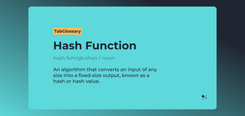What Is a Stop-Loss Order? Stop-Loss Order vs Stop-Limit Order. Example
A stop-loss order refers to a group of exchange features that help traders avoid losses. Stop limit and trailing stop-loss orders give traders additional benefits and help protect profits on a trade. What is a stop-loss order? Continue reading to find out.
What is a Stop-Loss Order?
A stop-loss order is a type of exchange order designed to prevent losses on a trade. Stop-loss orders give more control over market downturns, and can also help preserve profits.
Stop-Loss Orders Explained
As its name suggests, a stop-loss order is what traders use to avoid losing money on a trade which is in profit but not yet executed.
Similar to take-profit orders, stop-loss can be set to lock in profits on a rising pair, while a position losing money can limit those losses with stop-loss, too. Normally, it is the second scenario that leverages stop-loss orders.
As not everyone can monitor their trades constantly, stop-loss orders are a convenient way to have the market “trade for you” in your absence.
Traders set the “stop price” for selling an asset should its price start to decline against another. If this price hits, the stop-loss order gets converted to a regular market order and executes as close to the stop price as possible.
This allows any losses to remain more or less predictable (if the stop price is selected wisely), reduces the headache of policing trades manually and avoids trading on emotion.
Stop-Loss Example
Let’s say that a trader buys Bitcoin (BTC) with US dollars (USD) at a rate of $40,000. BTC/USD then goes up to $45,000, but the market is volatile. To avoid any serious losses, the trader uses a stop-loss order and sets a stop price at $39,000. BTC/USD then falls to $39,000 and hits the stop price, triggering a market sell order. The pair could fall further, but the trader avoids heavier losses thanks to stop loss. The market sell order executes at the closest available price to the stop price on the exchange order book at the time. Depending on order book liquidity and market volatility, this could be slightly different to the stop price itself.
Pros and Cons of Stop-Loss
- Limits losses on a trade.
- Simple to set up on an exchange.
- Guarantees minimum price for trade execution.
- Allows profits to be captured on a trend.
- If the order fails to execute, the trader can accrue much larger losses than planned.
- Efficacy depends on the trader’s skill in setting an appropriate stop price.
- Does not protect against major volatility; can be invalidated if an asset suddenly crashes through the stop price and/ or limit price.
- Unreliable trends carry the same invalidation risks as volatile markets.
Stop-Loss vs. Stop-Loss Limit
For added flexibility, the trader could set a stop limit order. Stop limit orders work like regular stop-loss orders but the stop price triggers a limit order rather than a market order.
Here, the order needs both a stop price and a limit price — let’s say $38,500. Once BTC/USD hits the $39,000 stop price, a limit order is created which requires BTC to be sold at $38,500 or higher. This is useful as it gives the trader a window in which the trade can execute, and avoids the scenario where the stop price is hit but BTC is not sold or sold at a price far from the stop price due to market volatility or liquidity on a specific exchange.

As such, stop limit orders attempt to guarantee a “minimum” price for the trade to be executed, giving more security to traders.
The stop price and limit price do not have to be absolute numbers. Instead, the trader could use a percentage value, eg. 10% below current spot price. This is called a trailing stop-loss order because the stop price moves in step with the market involved.
For instance, the stop price on the stop-loss order above, if converted to a trailing stop-loss order, would be $36,000 at the time of purchase. BTC/USD moved up to $45,000, making the stop price move up to $41,500. When BTC/USD began moving down again, however, the stop price stayed where it is, meaning that the market or limit order was triggered at $41,500, not $39,000.
Lock in Profits with Stop-Loss
Stop-loss orders are not only designed to stop traders losing too much money should a trade go sour. These orders can also be used to preserve profits on a winning trade.
The process here is more cumbersome than the “traditional” use of stop-loss (loss prevention).
If a trader makes money and has a stop-loss order set to avoid losses, that stop-loss order can be moved higher should the pair involved in the trade move up significantly. This allows the trader to lock in incrementally more and more profit, but also necessitates manual monitoring and placement of the new stop-loss order.
Trailing stop-loss can offer a form of workaround in this scenario, as the flexible stop price automatically moves up in accordance with the market.
If this sounds familiar, it’s because take-profit orders also exist to help lock in profits on trades. These can work in tandem with stop-loss orders, but also need to be set correctly in order to execute at the “right” price — for more information, click here.
Stop-loss orders work just as effectively for short positions as for long positions. If a trader is short an asset, the process for locking in profits or limiting losses is the same.
Stop-Loss Order FAQs
What is a good stop-loss rule?
Stop-loss orders need to be thought through carefully before you decide on a suitable stop price (and limit price if applicable). Only use stop-loss orders once you understand how much of a position you are willing to lose, and also acknowledge that volatile markets can end up invalidating the order with potential major implications for your trading strategy.
What is the difference between a stop-loss order and stop-limit order?
A stop-limit order is essentially an extension of a stop-loss order with the added features of a limit order. It expands on the capabilities of a stop-loss order by allowing more control over the eventual execution of the trade it governs. A trader first sets up the stop-loss order by selecting the stop price. Normally, this would be where the market sell order is triggered, which then fills at the nearest available price to the stop price. A stop-loss limit order features an additional component in the form of a “limit price.” This is separate from the stop price, and is also manually chosen by the trader. The limit price dictates conditions for a limit order which will be triggered once the market involved hits the stop price. Instead of a market sell order, the limit order offers a corridor of potential closing prices for the trade (with the limit price at one extreme and the stop price at the other). These conditions provide more of a guarantee that stop-loss orders will fill, and also provide a maximum permitted fill price.
What is an example of a stop-loss order?
A trader has purchased 10 Ethereum (ETH) with Tether (USDT) at $2,000. To protect themselves from losses, the trader uses a stop-loss order which will fill in the event of the market moving down. The trader sets the stop price at $1,900. Once ETH/USDT hits that price on the exchange, a market sell order will trigger which will sell ETH for USDT at the best available price relative to the stop price. In the trader’s absence, ETH/USDT first moves up to $2,200 but then down to $1,800. On the way, it hits the stop price, and the trader’s stop-loss order converts to a market sell order. The sell order fills at approximately $1,899 as the nearest price to the stop price, and the trader caps their losses at $1,010 (10x2,000 - 10x1,899). An alternative scenario could see the trader put in a trailing stop loss order to take advantage of the ETH/USDT move up to $2,200. Here, the stop price could be floating, for example 10% below spot price. At $2,200, the stop price would thus be $1,980. Once ETH/USDT begins to fall, the market sell would thus occur at $1,980 instead of $1,900, helping the trader preserve more profit.




